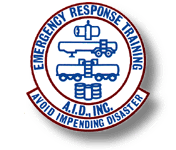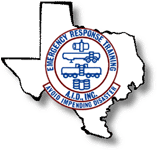To familiarize each student with the equipment, proper techniques (including decontamination), and documentation associated with obtaining air, liquid and solid samples. Techniques and skills necessary to adequately gather, control, record, and process samples totally representative of the air, soil, surface water, ground water or inside containers at a hazardous waste site or hazardous material incident will be covered.
The type and extent of sub-surface contamination can best be determined through a well-planned and comprehensive sampling program. Correctly choosing sampling locations, proper sampling tools, and using an effective sampling technique that maintains sample integrity and control, should all be a part of this plan.
Surface soil contaminated with hazardous and toxic pollutants represents a source for several types of contaminant migration. Rainfall infiltration can carry contaminants into the sub-surface aquifer or the rainfall runoff can carry contaminants into surface water. Also, the presence of contaminated surface soils poses a threat to human health through direct contact, volatilization, accumulation in the food chain, or air contamination via blowing contaminated dust particles.
This training course will prepare students to create, maintain, and execute a well planned comprehensive sampling program.





